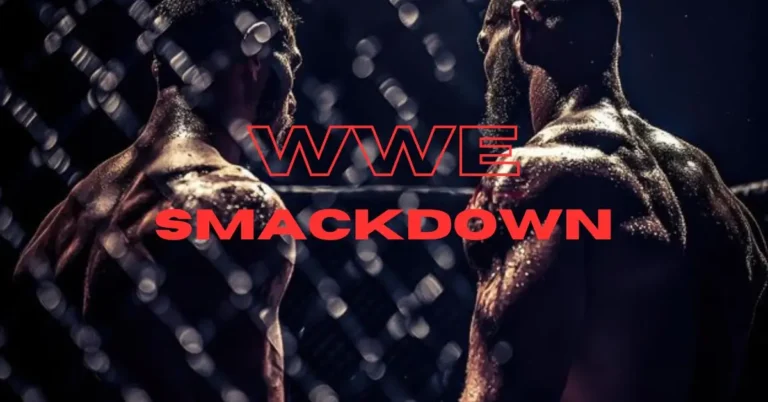Every Friday night, a specific shade of blue illuminates living rooms and sports bars across the globe. It’s not just a color; it’s a declaration. It’s the electric, pulsating aura of WWE Friday Night SmackDown, a two-hour weekly spectacle that has evolved from a simple television program into a cultural touchstone. More than just a wrestling show, SmackDown is a narrative engine, a proving ground for legends, and a canvas where athletic artistry and high-stakes drama collide. In the sprawling universe of World Wrestling Entertainment, SmackDown has carved out its identity as the definitive “A-Show,” a title earned through consistent excellence, iconic moments, and a roster that bleeds blue with pride.
The journey to this pinnacle was not overnight. Debuting in 1999, SmackDown was initially conceived as WWE’s secondary program, the edgier younger sibling to the long-established Monday Night RAW. It was the “Rock’s Show,” named after The Rock, who famously coined its catchphrase. For years, the brand thrived on a fierce rivalry with RAW, culminating in the first “Brand Split” in 2002. This was the crucible that forged SmackDown’s identity. No longer just another show, it became its own entity with a unique roster, championship titles, and a distinct personality.
Under the guiding hand of General Managers like Stephanie McMahon and, most notably, the visionary Paul Heyman, SmackDown in the early 2000s became known as “The Land of the Opportunity.” It was a place where in-ring work rate was paramount. While RAW often featured the bigger, mainstream names, SmackDown became the haven for pure athletes and technical wizards. It was the home of Kurt Angle’s Olympic excellence, Eddie Guerrero’s breathtaking Latino Heat, Rey Mysterio’s high-flying mastery, and the rise of a young phenom named Brock Lesnar. This era established a crucial part of the SmackDown DNA: an unwavering commitment to in-ring quality that demanded the audience’s respect.
This foundation set the stage for the modern era. Today, SmackDown’s identity is multifaceted, built on several key pillars that solidify its status as the premier show in WWE.
The Tribal Chief’s Yard: A Compelling Centerpiece
For years, the heartbeat of SmackDown has been the Bloodline saga, a storyline so rich in Shakespearian drama, familial tension, and gripping nuance that it has transcended sports entertainment and become must-see television in the purest sense. At its center is Roman Reigns, the “Tribal Chief” and Undisputed WWE Universal Champion. His historic, multi-year title reign has been the gravitational force around which the entire show orbits.
Reigns’s presence elevates everything. His championship matches are not just main events; they are events, period. The slow-burn storytelling of the Bloodline—from its peak of invincibility with the Wise Man Paul Heyman and the loyal “Right Hand Man” Jey Uso to its fracturing and eventual implosion—has been a masterclass in long-term narrative. It provided countless moments of incredible television: the betrayal of Sami Zayn, the defiant stand of Jey Uso, and the heartbreaking silence of a crowd as a single chair shot echoed a family’s collapse. This story gave SmackDown a purpose and a compelling through-line that kept viewers hooked week after week, proving that professional wrestling, at its best, can be as compelling as any prestige drama on television.
The Women’s Evolution Front and Center
SmackDown has also been the flagship for WWE’s Women’s Evolution. The blue brand’s women’s division has consistently been the deepest and most competitive in the company, a battleground for warriors who are every bit as compelling as their male counterparts. From the dominance of Charlotte Flair, a record-breaking champion whose very presence signifies a main event, to the raw, unfiltered power of Bianca Belair, whose strength, charisma, and record-setting reign made her “The EST of WWE.”
The division is a dynamic ecosystem of contrasting styles and personalities. It features the technical prowess of Shotzi, the unhinged aggression of Zelina Vega, and the sinister presence of the Kabuki Warriors (Asuka and Kairi Sane). This diversity ensures that the women’s segment of the show is never repetitive. It’s a division built on athletic competition and intense personal rivalries, where the fight for a championship opportunity is as fierce as the title matches themselves. SmackDown doesn’t just feature women’s wrestling; it celebrates and prioritizes it, making it an integral part of the show’s success.
A Roster Built on Depth and Charisma
Beyond the Bloodline and the women’s division, SmackDown’s strength lies in the incredible depth of its entire roster. It is a collection of some of the most charismatic and talented performers on the planet. LA Knight’s meteoric rise to super-stardom, fueled by his electric mic skills and connection with the audience, has made him a phenomenon. The towering presence of AJ Styles, a living legend whose in-ring genius continues to astound, provides a benchmark for excellence.
Randy Orton, the veteran “Viper,” brings a chilling aura and veteran savvy that can shift the momentum of the entire brand with a single RKO. Logan Paul, despite his outsider status, has proven to be a natural, delivering performances that blur the line between celebrity novelty and genuine main-event talent. And then there are the teams like the Street Profits and the Authors of Pain, who ensure the tag team division remains a vital and chaotic part of the show’s ecosystem. This mix of established legends, red-hot newcomers, and unique attractions creates a unpredictable and exciting product every single week.
The Stage for Spectacle
SmackDown’s presentation is another key to its success. The blue-ringed canvas is iconic, but it’s the production value that truly sets it apart. From pyro explosions that greet the biggest stars to state-of-the-art lighting and camera work that makes every superkick and spear feel like a seismic event, SmackDown is a visual and auditory feast. The commentary team of Corey Graves and Wade Barrett provides the perfect soundtrack—a blend of insightful analysis, sharp wit, and heated debate that enhances the action without overpowering it.
Furthermore, SmackDown has mastered the art of the cliffhanger. Whether it’s a shocking return, a brutal assault, or a championship changing hands on the final second of the broadcast, the show consistently gives the audience a reason to come back next week. It understands the rhythm of weekly television, building stories methodically before delivering a pay-off that feels earned and explosive.
More Than a Show: A Friday Night Institution
In the end, WWE Friday Night SmackDown is more than the sum of its parts. It is a feeling. It’s the anticipation of the crowd as the iconic opening video hits. It’s the roar that greets a beloved hero or the chorus of boos that showers a despised villain. It is the collective gasp at a shocking moment and the shared joy of a long-awaited victory.
It has weathered competition, roster changes, and network moves, yet its core identity remains intact: a show built on excellence. It is the land of opportunity where new stars are forged in the fire of competition. It is the home of epic storytelling, where family sagas unfold with biblical weight. It is the showcase for the world’s greatest athletes, male and female, who perform feats of astonishing strength and agility.
In the grand arena of sports entertainment, many shows enter, but only one can claim to be the A-Show. With its unparalleled roster, historic storytelling, and consistent delivery of unforgettable moments, the blue brand doesn’t just claim that title—it defends it, successfully, every single Friday night. SmackDown isn’t just must-watch TV for wrestling fans; it is a compelling argument for why this unique blend of athletics and theater continues to captivate millions around the world.

